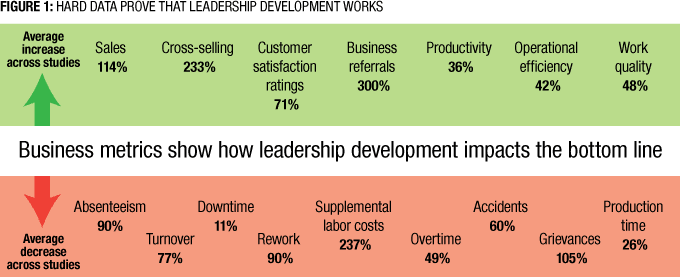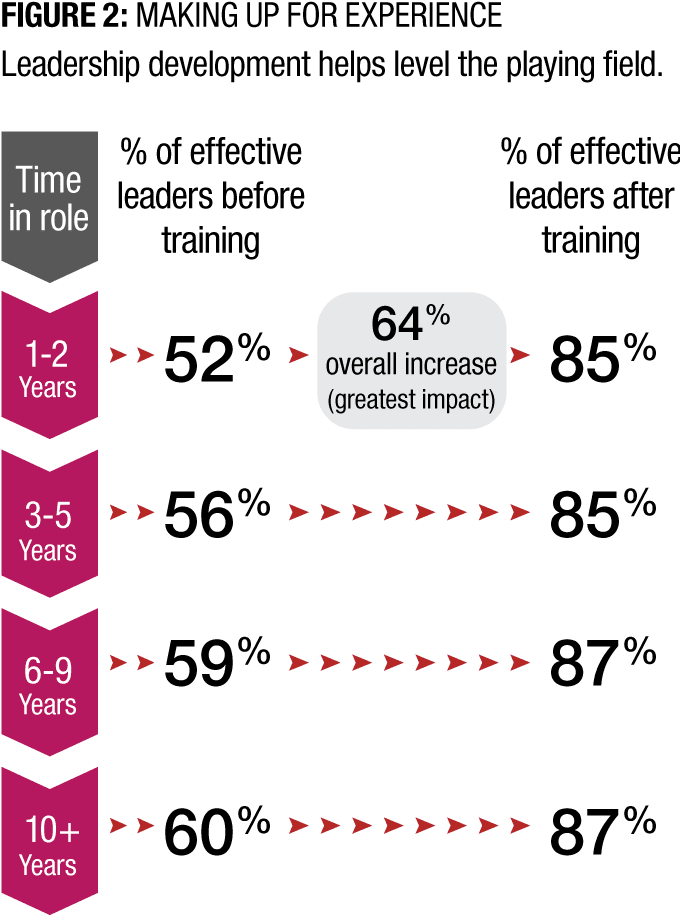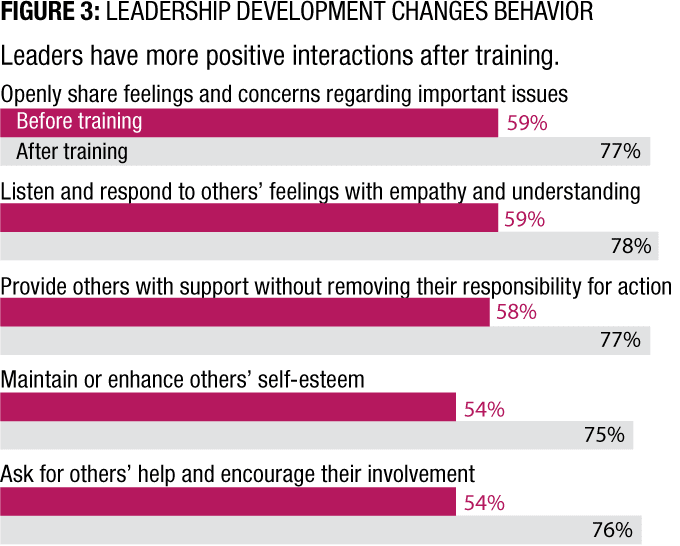In recent years, CLOs have faced growing headwinds when it comes to making a business case for leadership development.
An article in McKinsey Quarterly accused U.S. companies of lavishing $14 billion per year on programs to nurture their leaders while seeing little in return. The Wall Street Journal ran an article a few years ago titled “So Much Training, So Little to Show for It.” And the authors of an October 2016 article in Harvard Business Review referred to leadership development programs as the “great training robbery.”
The irony is the need for better leaders continues to grow. Global CEOs identified improved leadership development practices as a top five human capital strategy, according to the “Global Leadership Forecast 2014-15,” conducted by The Conference Board and Development Dimensions International. Yet, the same study found just 40 percent of leaders said the quality of their organization’s leadership is high and only 15 percent said they have a strong leadership bench — a decline of 18 percent from 2011.
 The considerable need for leadership development but low expectation of a documented return on it presents a quandary for CLOs who understand how critical developing their organizations’ leaders is. They are in the awkward position of having to make a business case for investing in programs when there seems to be little proof that they deliver impact.
The considerable need for leadership development but low expectation of a documented return on it presents a quandary for CLOs who understand how critical developing their organizations’ leaders is. They are in the awkward position of having to make a business case for investing in programs when there seems to be little proof that they deliver impact.
However, a DDI analysis of longitudinal data from one leadership development program offers useful evidence to CLOs charged with making a case to CEOs or senior executives.
The study looked at data gathered over more than 40 years from more than 18,000 leaders and 12,000 managers, peers and direct reports of leaders who completed on average five courses from a leadership development program designed to improve business and interpersonal skills.
Yes, Leadership Development Works
One of the biggest findings of the study was, contrary to the negativity, leadership development really does work: 82 percent of managers, peers and direct reports of people trained cited higher frequency of observed positive leadership behaviors among leaders after they had completed development courses.
Positive behaviors included leadership competencies such as building trust, influencing, leading change, managing performance problems and resolving conflict. This finding is more reliable because it’s based on data from observers — the people who leaders interact and work with every day — as opposed to leaders’ self-ratings of their own effectiveness, which is less objective.
Additionally, the study found that 81 percent of people who report to a trained leader said they were more engaged in their jobs. Even more important is how the change in leader behavior in 43 companies affected important business metrics (Figure 1). A further 22 companies calculated return on investment for their training programs and found ROI figures ranged from 147 percent to 633 percent.
Leadership Development Supports Business Goals
 In building a business case, CLOs also need to be aware of how leadership development programs can support broader business goals.
In building a business case, CLOs also need to be aware of how leadership development programs can support broader business goals.
Leadership development can make new leaders effective faster. The research found that a good development program can elevate the capability of leaders who have been in their roles for just one to two years to a level comparable to leaders who have been in their roles 10 years or more — promoting consistency in leadership quality regardless of tenure (Figure 2).
Improved gender equality in leadership is another result. Analysis showed that a leadership development program will be equally effective at improving the skills of both men and women but 82 percent of women reported their confidence in being a leader increased after participating in a development program. Lack of self-confidence is a significant factor holding women back from career advancement.
Leadership development also helps leaders perform better as they transition into global roles. A global development program can promote a common leadership language across borders and help set leaders up for success as they take on global assignments.
Building a business case for leadership development can be a challenge for CLOs. But, it needn’t be that way. Identifying metrics and showing the bottom-line impact improves standing as a trusted partner for the business and paves the way for investment in your leaders — and the organization’s future.
William C. Byham is executive chairman of DDI and the author of 28 books, including “Leaders Ready Now.” He can be reached at editor@CLOmedia.com.














